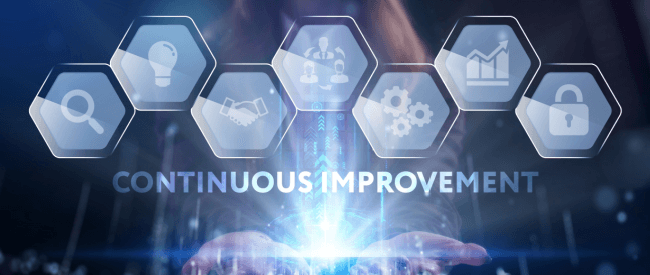My personal experiences with leadership training have turned me into an advocate for corporate training that builds great leaders at our organization. I’ve found these courses have helped me to not only become a better business leader but a better person, which goes hand in hand.
The training often focuses on techniques that not only promote more effective approaches for leading at work but also key life lessons, especially when it comes to improving how you communicate in different situations. For example, you learn to become a better mentor or coach, which you can apply when raising your children. You learn to enhance collaboration for problem solving, which can come in handy in your day to day life.
I’ve also seen the difference leadership training has made for our management team. We want our employees and managers to have the opportunity to do their best work for us, for our customers – and for themselves.
Some lessons that we’ve put into practice.
Setting clear accountability. A good leader must know how to hold employees accountable. That doesn’t mean blaming them when things go wrong. It means making sure that you, as a leader, take the right communication steps in advance so employees know what’s expected of them. Not only in terms of deadlines, but also making sure they understand what the ask is.
A good technique for that is asking an employee to repeat in their own words what they need to achieve and what the deliverable is. Then, most importantly, listen to the response. What often brings a smile to my face at Nordis? When I overhear a manager asking an employee, “What’s the specific deliverable you see and when can you have it ready?”
Holding difficult conversations. I’ve also learned from Chalmers Brothers, one of the national leadership coaches I’ve tapped for Nordis, that leaders get paid to have effective conversations. He teaches new ways to understand language and the power of conversations. Most people shy away from conflict and difficult topics. But if you’re in a managerial position, difficult conversations are important, and you need to understand how to successfully hold them. Three tips to set the stage for having effective conversations: Check your mood to make sure you’re in a positive state of mind, start and stick with the facts and show empathy.
Developing self-awareness. Ask yourself if you’re seeing your own behavior as it really is. Are you aware of your “public identity?” For example, do people bring you new ideas or stop by to discuss progress on projects? Or are you someone who always gives orders and people avoid talking to you? If the latter is the case, you may need to change your style of communicating so you can take advantage of the power of collaboration.
Being present. Being self-aware goes hand-in-hand with being present. One powerful way to become more present is through meditation and mindfulness. In the New York Times best-selling book Search Inside Yourself, you’ll learn that the main business case for meditation and mindfulness is that it helps you be fully present on the job, which in turn improves your emotional intelligence and drives better decision making.
Meditating. At Nordis, I lead a weekly early morning meditation practice. The meditation session gives me an opportunity to teach and search within myself at the same time. During meditation, you remove the ego to separate your thoughts from yourself—so you examine your thoughts without being your thoughts. At the same time, the collective energy of all of us meditating in the same space becomes a very powerful tool for self-awareness and reflection.
The bottom line: Leadership training is good for business. The great Vince Lombardi once said, “Leaders are not born, they’re made.” No matter how experienced someone is as a leader, training can make you better.





